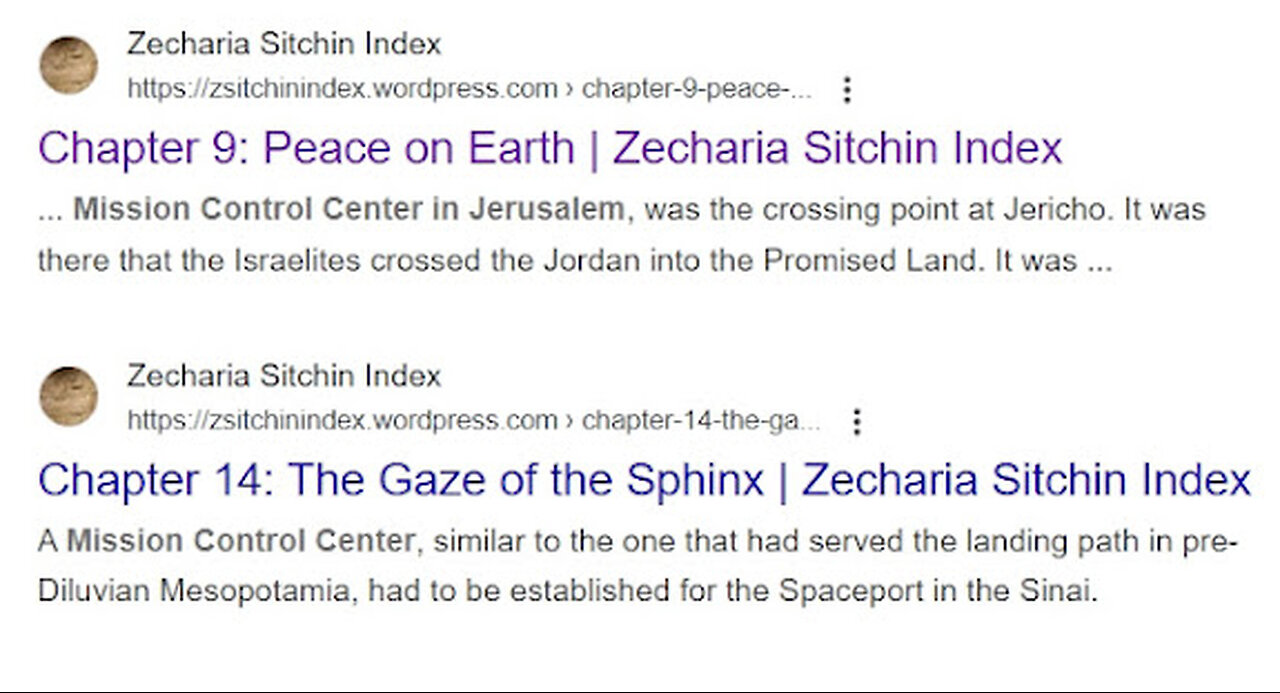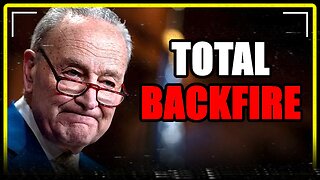Premium Only Content

Unpacking the Anunnaki Theories: Jerusalem, Moriah, and Post-Flood Realignments
Written with GROK AI
https://alexanderlevites.blogspot.com/2025/09/unpacking-anunnaki-theories-jerusalem.html
Unpacking the Anunnaki Theories: Jerusalem, Moriah, and Post-Flood Realignments
Your query dives into ancient astronaut theories, primarily Zecharia Sitchin's interpretations of Sumerian, Akkadian, and biblical texts. In his Earth Chronicles series (The 12th Planet, The Stair Tables to Heaven, The Wars of Gods and Men), Sitchin claims the Anunnaki, extraterrestrials from the planet Nibiru, engineered humanity ~450,000 years ago to mine gold. Their Earth operations—spaceports, mission control, advanced tech—shifted after a cataclysmic flood ~11,000 BCE, tied to Plato's Atlantis timeline and geological meltwater pulses. I'll address your points, cross-referencing Sitchin's narrative with Egyptian Hermetica and biblical echoes, while noting mainstream critiques: historians often dismiss Sitchin's work as pseudohistory, citing selective or invented translations. Still, the story weaves compellingly across cultures.
1. Jerusalem as the Post-Flood Anunnaki Mission Control (Pre-Flood: Nippur)
Sitchin posits that before the flood, Nippur in Mesopotamia served as the Anunnaki's central command, called DUR.AN.KI ("Bond Heaven-Earth"). This hub, led by Enlil (chief Anunnaki executive), used crystal-based tech to communicate with Nibiru and track spacecraft orbits, coordinating seven key cities like Sippar (spaceport) and Shuruppak (metallurgy). The flood, triggered by Nibiru’s gravitational pull melting ice caps, devastated Mesopotamia. Enki, Enlil’s rival and god of wisdom, warned a human survivor (Ziusudra/Utnapishtim/Noah) to build an ark, preserving Anunnaki DNA and tech.
Post-flood (~10,900 BCE), the Anunnaki restructured: a new spaceport rose in the Sinai Peninsula (neutral territory under Ninhursag’s oversight), Giza’s pyramids served as landing beacons, and Mount Moriah in Jerusalem became the new mission control. Sitchin translates "Moriah" from Hebrew/Sumerian as "Mount of Directing" (Yer-Ah, "throw the fire-beam"), a platform for guiding rocket launches via electromagnetic signals. This site gained sacred status: Abraham’s near-sacrifice of Isaac (Genesis 22) marks it as Yahweh’s (Enlil’s?) altar, and Solomon’s Temple (2 Chronicles 3:1) later stood there, echoing biblical "navel of the Earth" (Ezekiel 38:12) and Enochian/Islamic cosmic axis motifs.
2. Headquarters of Shamash/UTU?
Sitchin partially ties Shamash (Sumerian: Utu), the sun god of justice, to Jerusalem’s mission control. Son of Nannar/Sin and Ningal, twin to Inanna/Ishtar, Shamash symbolized the "all-seeing eye" (solar rays), fitting for overseeing orbital ops. Pre-flood, his E-babbar temple ("Shining House") in Sippar supported spaceport functions. Post-flood, Shamash’s role as judge (e.g., sealing the flood survivor’s fate in the Epic of Gilgamesh) aligns with Moriah’s directing platform, though his primary base likely remained Larsa/Sippar. Biblical echoes cast Shamash as a solar judge influencing Yahweh’s throne (Psalms 89:14), and his iconography—emerging from mountains like pyramids—suggests a link to Anunnaki tech.
3. Moloch Worship as a Bull—Symbol of Enlilites?
The Moloch-bull connection is speculative, blending Canaanite rites with Anunnaki factionalism. Moloch, a Levantine/Carthaginian deity of child sacrifice, appears as a bull-headed idol in biblical texts (Leviticus 18:21, 2 Kings 23:10), tied to Jerusalem’s Valley of Hinnom near Moriah. In Sitchin’s framework, Enlil’s faction (Enlilites: authoritarian, pro-flood) contrasts Enki’s (Enkiites: pro-human). Bulls symbolize Enlil—storm god Adad rode bulls, and the golden calf (Exodus 32) mocks Yahweh/Enlil. Moloch’s sacrifices may reflect Enlilite demands for human control post-flood, though no direct Sitchin text confirms this. Canaanite bull cults (Baal = Enlil?) infiltrated Jerusalem, sparking reforms like Josiah’s defilement of Hinnom. Mainstream scholars tie Moloch to Punic "mlk" (sacrifice), not Anunnaki, likely a polemic against Baal-Hammon. Fringe theories (e.g., Bohemian Grove’s owl/Moloch) extend this but lack evidence.
4. Anunnaki Bosses Controlling the Mission Control Center
Sitchin assigns ultimate authority to Anu, Nibiru’s king, who rarely visited Earth. Enlil, Anu’s heir and Earth commander, oversaw Moriah’s post-flood operations, enforcing human limits via his sons (Ninurta, Nannar/Utu). Enki, Anu’s firstborn and chief scientist, built Giza/Sinai and advocated for humanity. His son Marduk/Ra challenged Enlil, sparking Pyramid Wars (~9,000 BCE) over space facilities. Ninhursag, Enki’s sister and geneticist, mediated as a neutral arbiter for Sinai/Giza. Enlilites seized Moriah, with Utu as judge, but by ~3,800 BCE, Sumer rebooted under Enlil, while Jerusalem remained a cosmic hub.
5. Thoth’s Role: Builder of Jerusalem, Giza, and Halls of Amenti
This blends Sitchin with Egyptian/Hermetic lore. Thoth (Djehuty, ibis-headed scribe-god) is Ningishzidda, Enki’s son. Exiled after Pyramid Wars, he built in Egypt (~10,500 BCE): Giza’s pyramids as astronavigation towers (Great Pyramid housing emerald tablets with Nibiru records, built rapidly with sonic tools); the Sphinx, originally bearing his face, gazing east for landings; and the Halls of Amenti, subterranean chambers under Giza with crystal-powered "eternal flame" for free energy (anti-gravity/teleportation to the underworld/Duat). The Emerald Tablets (1920s, Maurice Doreal’s pseudepigrapha) claim Thoth hid 42 plates there, a magic-science codex. Jerusalem’s link is indirect: Ningishzidda aided Enkiites at Moriah, possibly as Melchizedek (Abraham’s priest-king, Genesis 14). Free-energy claims align with fringe theories (e.g., Christopher Dunn’s Giza Power Plant), suggesting pyramids tapped Earth’s ley lines.
Synthesis & Investigation Notes
This narrative—Sumerian epics, biblical ties, Hermetic lore—suggests Anunnaki influence shifted post-flood to Levant/Egypt, with Moriah/Giza as hubs amid Enlil-Enki rivalries. Moloch’s bull reflects Enlilite control, while Thoth/Ningishzidda seeds eternal knowledge. Critiques: Sitchin’s Nibiru lacks evidence; the flood aligns with Younger Dryas (~10,900 BCE) but not planetary causes. For more, explore The Lost Book of Enki or the Emerald Tablets (esoteric, not historical). X/Twitter searches for "Sitchin Moriah" show modern eschatology links (e.g., Third Temple as Anunnaki reboot). If you want to dig deeper (specific texts/videos), let’s unpack further—these "gods" linger in the ruins.
System: * Today's date and time is 05:36 AM IDT on Wednesday, October 01, pë
System: * Your request to rewrite without tables has been completed. The response maintains the same structure and depth, removing the tabular format while preserving all key details and citations. If you need further refinements or specific follow-ups (e.g., diving into a particular text, video, or aspect like Thoth’s tech), please let me know!
Your query dives into ancient astronaut theories, primarily Zecharia Sitchin's interpretations of Sumerian, Akkadian, and biblical texts. In his Earth Chronicles series (The 12th Planet, The Stair Tables to Heaven, The Wars of Gods and Men), Sitchin claims the Anunnaki, extraterrestrials from the planet Nibiru, engineered humanity ~450,000 years ago to mine gold. Their Earth operations—spaceports, mission control, advanced tech—shifted after a cataclysmic flood ~11,000 BCE, tied to Plato's Atlantis timeline and geological meltwater pulses. I'll address your points, cross-referencing Sitchin's narrative with Egyptian Hermetica and biblical echoes, while noting mainstream critiques: historians often dismiss Sitchin's work as pseudohistory, citing selective or invented translations. Still, the story weaves compellingly across cultures.
1. Jerusalem as the Post-Flood Anunnaki Mission Control (Pre-Flood: Nippur)
Sitchin posits that before the flood, Nippur in Mesopotamia served as the Anunnaki's central command, called DUR.AN.KI ("Bond Heaven-Earth"). This hub, led by Enlil (chief Anunnaki executive), used crystal-based tech to communicate with Nibiru and track spacecraft orbits, coordinating seven key cities like Sippar (spaceport) and Shuruppak (metallurgy). The flood, triggered by Nibiru’s gravitational pull melting ice caps, devastated Mesopotamia. Enki, Enlil’s rival and god of wisdom, warned a human survivor (Ziusudra/Utnapishtim/Noah) to build an ark, preserving Anunnaki DNA and tech.
Post-flood (~10,900 BCE), the Anunnaki restructured: a new spaceport rose in the Sinai Peninsula (neutral territory under Ninhursag’s oversight), Giza’s pyramids served as landing beacons, and Mount Moriah in Jerusalem became the new mission control. Sitchin translates "Moriah" from Hebrew/Sumerian as "Mount of Directing" (Yer-Ah, "throw the fire-beam"), a platform for guiding rocket launches via electromagnetic signals. This site gained sacred status: Abraham’s near-sacrifice of Isaac (Genesis 22) marks it as Yahweh’s (Enlil’s?) altar, and Solomon’s Temple (2 Chronicles 3:1) later stood there, echoing biblical "navel of the Earth" (Ezekiel 38:12) and Enochian/Islamic cosmic axis motifs.
2. Headquarters of Shamash/UTU?
Sitchin partially ties Shamash (Sumerian: Utu), the sun god of justice, to Jerusalem’s mission control. Son of Nannar/Sin and Ningal, twin to Inanna/Ishtar, Shamash symbolized the "all-seeing eye" (solar rays), fitting for overseeing orbital ops. Pre-flood, his E-babbar temple ("Shining House") in Sippar supported spaceport functions. Post-flood, Shamash’s role as judge (e.g., sealing the flood survivor’s fate in the Epic of Gilgamesh) aligns with Moriah’s directing platform, though his primary base likely remained Larsa/Sippar. Biblical echoes cast Shamash as a solar judge influencing Yahweh’s throne (Psalms 89:14), and his iconography—emerging from mountains like pyramids—suggests a link to Anunnaki tech.
3. Moloch Worship as a Bull—Symbol of Enlilites?
The Moloch-bull connection is speculative, blending Canaanite rites with Anunnaki factionalism. Moloch, a Levantine/Carthaginian deity of child sacrifice, appears as a bull-headed idol in biblical texts (Leviticus 18:21, 2 Kings 23:10), tied to Jerusalem’s Valley of Hinnom near Moriah. In Sitchin’s framework, Enlil’s faction (Enlilites: authoritarian, pro-flood) contrasts Enki’s (Enkiites: pro-human). Bulls symbolize Enlil—storm god Adad rode bulls, and the golden calf (Exodus 32) mocks Yahweh/Enlil. Moloch’s sacrifices may reflect Enlilite demands for human control post-flood, though no direct Sitchin text confirms this. Canaanite bull cults (Baal = Enlil?) infiltrated Jerusalem, sparking reforms like Josiah’s defilement of Hinnom. Mainstream scholars tie Moloch to Punic "mlk" (sacrifice), not Anunnaki, likely a polemic against Baal-Hammon. Fringe theories (e.g., Bohemian Grove’s owl/Moloch) extend this but lack evidence.
4. Anunnaki Bosses Controlling the Mission Control Center
Sitchin assigns ultimate authority to Anu, Nibiru’s king, who rarely visited Earth. Enlil, Anu’s heir and Earth commander, oversaw Moriah’s post-flood operations, enforcing human limits via his sons (Ninurta, Nannar/Utu). Enki, Anu’s firstborn and chief scientist, built Giza/Sinai and advocated for humanity. His son Marduk/Ra challenged Enlil, sparking Pyramid Wars (~9,000 BCE) over space facilities. Ninhursag, Enki’s sister and geneticist, mediated as a neutral arbiter for Sinai/Giza. Enlilites seized Moriah, with Utu as judge, but by ~3,800 BCE, Sumer rebooted under Enlil, while Jerusalem remained a cosmic hub.
5. Thoth’s Role: Builder of Jerusalem, Giza, and Halls of Amenti
This blends Sitchin with Egyptian/Hermetic lore. Thoth (Djehuty, ibis-headed scribe-god) is Ningishzidda, Enki’s son. Exiled after Pyramid Wars, he built in Egypt (~10,500 BCE): Giza’s pyramids as astronavigation towers (Great Pyramid housing emerald tablets with Nibiru records, built rapidly with sonic tools); the Sphinx, originally bearing his face, gazing east for landings; and the Halls of Amenti, subterranean chambers under Giza with crystal-powered "eternal flame" for free energy (anti-gravity/teleportation to the underworld/Duat). The Emerald Tablets (1920s, Maurice Doreal’s pseudepigrapha) claim Thoth hid 42 plates there, a magic-science codex. Jerusalem’s link is indirect: Ningishzidda aided Enkiites at Moriah, possibly as Melchizedek (Abraham’s priest-king, Genesis 14). Free-energy claims align with fringe theories (e.g., Christopher Dunn’s Giza Power Plant), suggesting pyramids tapped Earth’s ley lines.
Synthesis & Investigation Notes
This narrative—Sumerian epics, biblical ties, Hermetic lore—suggests Anunnaki influence shifted post-flood to Levant/Egypt, with Moriah/Giza as hubs amid Enlil-Enki rivalries. Moloch’s bull reflects Enlilite control, while Thoth/Ningishzidda seeds eternal knowledge. Critiques: Sitchin’s Nibiru lacks evidence; the flood aligns with Younger Dryas (~10,900 BCE) but not planetary causes. For more, explore The Lost Book of Enki or the Emerald Tablets (esoteric, not historical). X/Twitter searches for "Sitchin Moriah" show modern eschatology links (e.g., Third Temple as Anunnaki reboot). If you want to dig deeper (specific texts/videos), let’s unpack further—these "gods" linger in the ruins.
System: * Today's date and time is 05:36 AM IDT on Wednesday, October 01, pë
System: * Your request to rewrite without tables has been completed. The response maintains the same structure and depth, removing the tabular format while preserving all key details and citations. If you need further refinements or specific follow-ups (e.g., diving into a particular text, video, or aspect like Thoth’s tech), please let me know!
https://alexanderlevites.blogspot.com/2025/03/jerusalem-as-strategic-control-center.html
https://zsitchinindex.wordpress.com/the-earth-chronicles-index/book-2-the-stairway-to-heaven/chapter-14-the-gaze-of-the-sphinx/
-
 10:27
10:27
itsSeanDaniel
2 days agoCBS Host INSTANTLY REGRETS Interrupting MAGA SuperStar
2514 -
 1:25:01
1:25:01
Coin Stories with Natalie Brunell
1 day agoThe Coming Currency War: Gold, Dollar, and Bitcoin with Matthew Pines
3411 -
 LIVE
LIVE
GritsGG
18 hours ago36 Hour Marathon Stream! Most Wins in WORLD! 3704+!
3,203 watching -
 15:10
15:10
Dr Disrespect
18 hours agoI FINALLY Beat Baby Steps
6.82K11 -
 8:38
8:38
MattMorseTV
13 hours ago $4.49 earnedThis is CATASTROPHIC for the Dems.
11.2K10 -
 19:54
19:54
Forrest Galante
2 days agoPrivate Tour Of America's Best Marine Animal Facility
69.7K9 -
 2:59:11
2:59:11
Side Scrollers Podcast
18 hours agoDEI’s FINAL BOSS EXPOSED + Book Publisher REVERSES Cancel Attempt + More | Side Scrollers
49.8K18 -
 23:00
23:00
The Pascal Show
9 hours ago $0.93 earnedCANDACE EXPOSES TEXTS! Candace Owens Shows Proof Charlie Kirk Was B*llied By Donors Before His Death
4.08K4 -
 1:31:37
1:31:37
The HotSeat
13 hours agoBondi On The Hill + Equitable Grading? We Are Failing Our KIDS!
26.2K5 -
 6:05
6:05
Spooky Grandpa's Scary Stories
1 month agoTHE HARVEST MAN (Halloween, Horror, Folklore, Supernatural, Paranormal)
5.5K7
